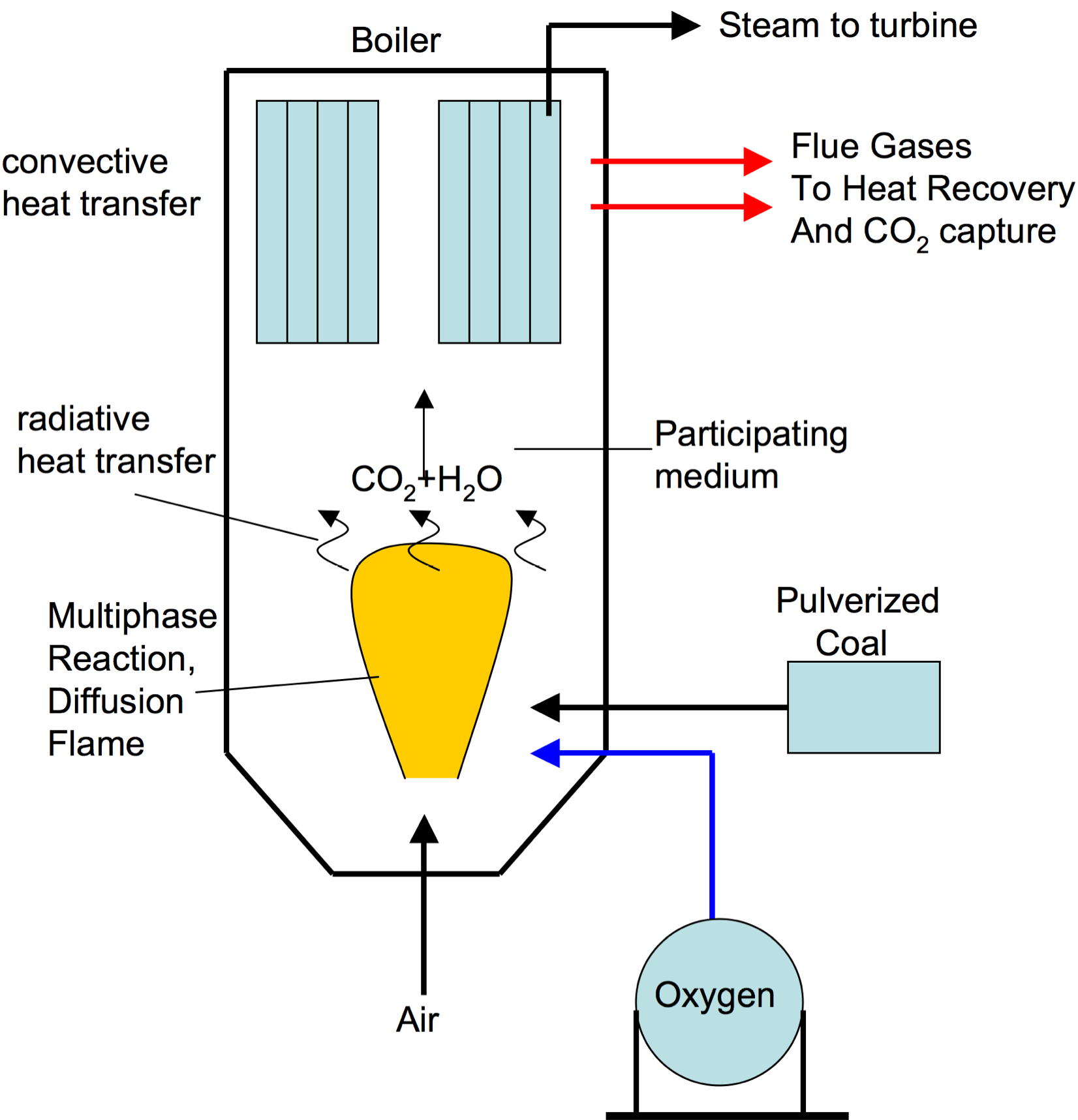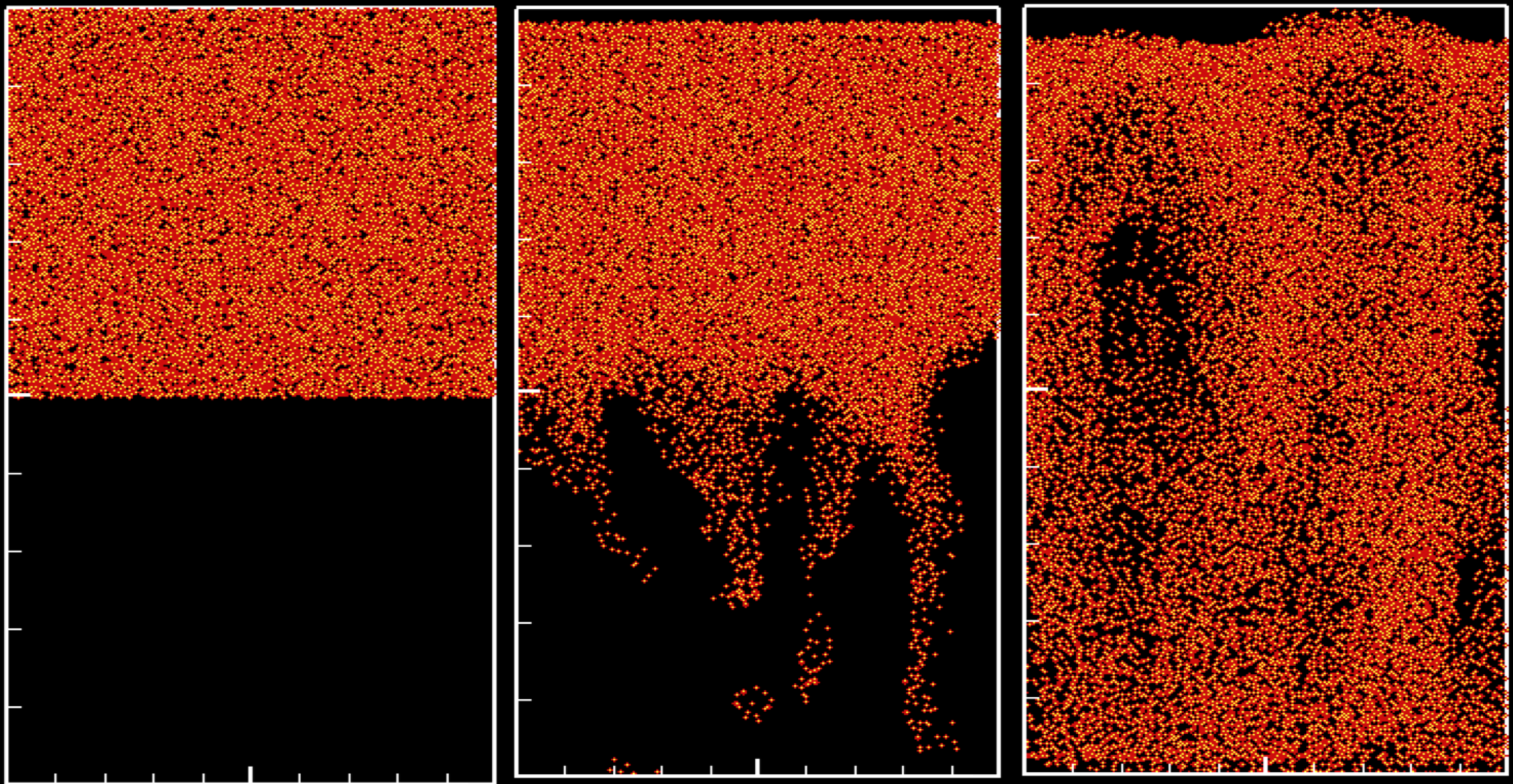Modeling Particle-Laden Flows in Oxycoal Reactors
 Clean coal combustion technologies are of considerable importance in reducing emissions and resulting environmental pollution from consumption of fossil fuels in thermal power plants. New approaches utilizing oxygen-rich combustion for reduction of pollutants has received considerable interest. Pulverized coal, oxy-fuel combustion systems burn fossil fuels in a mixture of recirculated flue gas and oxygen, as opposed to pure air. With oxygen-rich environments, the combustion process goes to completion, thus reducing pollutant formation. The resultant products are rich in water vapor and CO2. With proper separation of water vapor through condensation, the CO2 stream can be captured. Carbon sequestration and storage thus allow ‘clean’ alternatives to traditional power generation based on fossil-fuels. Clean coal combustion technologies are of considerable importance in reducing emissions and resulting environmental pollution from consumption of fossil fuels in thermal power plants. New approaches utilizing oxygen-rich combustion for reduction of pollutants has received considerable interest. Pulverized coal, oxy-fuel combustion systems burn fossil fuels in a mixture of recirculated flue gas and oxygen, as opposed to pure air. With oxygen-rich environments, the combustion process goes to completion, thus reducing pollutant formation. The resultant products are rich in water vapor and CO2. With proper separation of water vapor through condensation, the CO2 stream can be captured. Carbon sequestration and storage thus allow ‘clean’ alternatives to traditional power generation based on fossil-fuels.
We are developing a large-eddy simulation (LES) technology for reactive flow simulations of coal-particles in reaslistic oxycoal boilers. Another part of this work is modeling radiative heat transfer in participating media. We are collaborating with Dr. Todd Palmer on radiative heat transfer modeling. An implicit Monte Carlo technique is being coupled with our flow solver to develop an integrated flow-radiative transport framework. Challenges include parallelization, range of time scales involving radiative heat transfer, turbulent mixing, combustion and coal pyrolysis.

Rayleigh-Taylor instability in a dense granular system.
-
Shams, E., and Apte S.V., Modeling volumetric coupling in dispersed phase using Eulerian Lagrangian approach, ILASS America's 21st Annual Conference on Liquid Atomization and Spray Systems, Orlando, FL, May 2008. (PDF)
-
Apte S.V., Mahesh, K., and Lundgren, T. 2008, Accounting for finite-size effect in disperse two-phase flow, International Journal of Multiphase Flow, Vol. 34 (4), pp. 260-271. (PDF)
|

